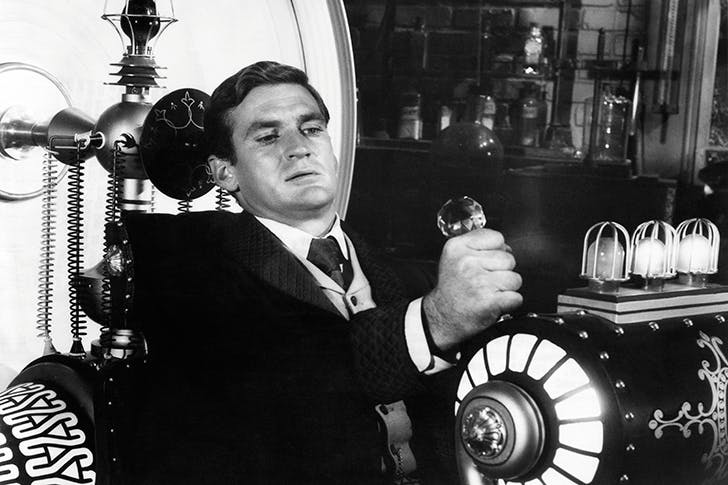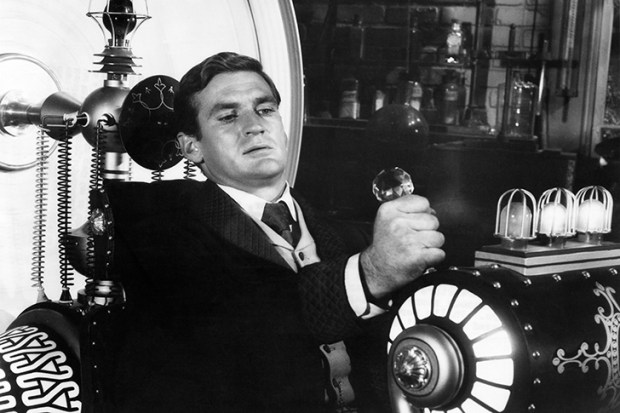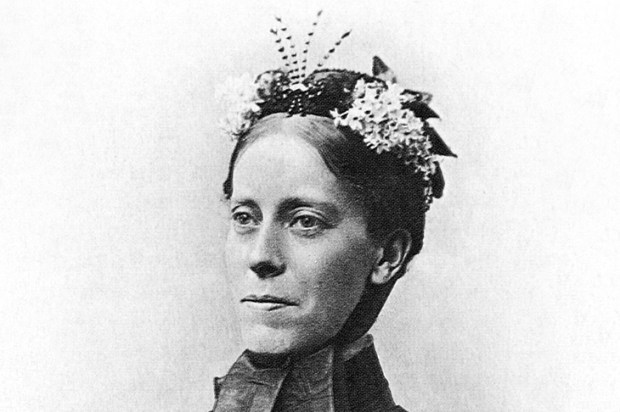2016 was probably the year even the most optimistic of us — those who can genuinely square the new populist politics with a bright future for truth-seekers, scientists and rational thinkers — gave up on the possibility of time travel.
Surely, on every rally stage there should have been at least one white man from the future (it’s generally a white man for the simple statistical reason that if you’re a woman or a non-white man and go travelling in time, there’s only about 0.2 per cent of recorded history where you won’t materialise to immediate shouts of, ‘Quick, Paw, fetch the best whupping switch — and a cage’), wild-eyed, oddly dressed, raising up his ray gun to erase the crazed possibility of the Leader of the Free World… well, you know the rest.
So. Either time travel can’t happen or we’re all going up in a nuclear holocaust before we get round to inventing it. Famously, Stephen Hawking once held a time-travellers’ party. He sent the invitations out after the date, having sat there all afternoon (no one showed).
Regardless, James Gleick’s book on the subject is endlessly fascinating and as thorough as you like, but written with his customary grace and wit.
He is good on the history of what time actually is (spoiler alert: nobody has much of a Scooby Doo, and the problem gets punted back and forth between physicists and philosophers throughout history). He looks at multiworld theorists (‘the cool kids at the back of the class’) and Gödel’s closed time-like curves, and is particularly good on why the only thing anyone agrees on in the field is how time is not at all like a river. (Although he omits my own favourite definition, from Carlo Rovelli’s sublime little book Seven Brief Lessons in Physics — ‘the fundamental phenomenon that distinguishes the future from the past is the fact that heat passes from things that are hotter to things that are colder’ — the direction is ‘sheer chance’.)
As well as the science, and possibly of more interest to the casual reader, he offers a thorough examination of time travel in fiction, and all its paradoxes and joys.
What strikes you first is that for an idea so all-pervasive, it’s astonishingly recent. Before H.G. Wells — who didn’t die until 1946 — time travel as a concept barely existed. Now, vast amounts of our popular culture (Superman, The Terminator, Doctor Who) are drenched in it.
There are several reasons for this: the Victorians introduced evolutionary theory, which suggested the world was rather older than the biblical 4,000 years or so. And you were no longer living as your ancestors had; the industrial revolution standardised time for you; mechanised it, made it incredibly important — and, eventually, sold it back to you as pointlessly expensive watches.
Relativity theory was the shot through the heart of what time could be, with all the tantalising possibilities for storytellers that this presented. New technologies like photography invited us to examine the past in more detail than ever before. As Jack Finney says in his marvellous time-travel novel Time and Again:
I mean… the sense of wonder, staring at the strange clothes and vanished backgrounds, at knowing that what you’re seeing was once real… You could actually have gone into that strange outmoded old building and seen what now you never can — what was just inside the door.
Then modernism came along and chopped up time in paintings and novels, and Douglas Adams more or less finished the job by inventing (presoon mayan finishon the job inventun onwhen) time-travel grammar.
Finally, and most poignantly, Gleick points out that to travel in time is to cheat death; to see yourself in other times and in other ways. When the entrenched belief that you would die then live again in perfect stasis for eternity — so acutely named the ‘hereafter’ — waned, a dream of travelling in time, healing and perfecting old mistakes, was one of the many fantasies that crept in to take its place. Because the ‘what if’, if it cannot be solved in heaven, must be solved in this universe.
So. It might still be worth memorising a few Grand National winners and packing your ray gun, just in case.
Gleick is a wonderful guide and companion to something so conceptually head-spinning and exciting. He’s dry and funny, and always knows when you’ve had enough (the chapters are more or less a perfect length). Without pretending that anyone has all the answers, or pushing his own agenda, he’s soothing on the grandparent paradox, flattering in constantly pointing out that it makes everyone’s head spin, not just yours, and full of brilliant snippets.
For example, did you know that Ursula LeGuin and Phillip K. Dick were in the same class at school? Or that the first story written that suggested going back in time and killing Hitler was written in 1941? Or that other cultures believe the past to be in front of them, where they can see it? In many languages, yesterday is the day ahead, tomorrow the day behind. In Mandarin, last month was up, next month is down.
But will we ever travel in time, apart from one second per second, direction future (whatever that is)?
Well, here is William Gibson on the experience of contemporary time
travel you are probably most familiar with — jet lag:
Her mortal soul is leagues behind her, being reeled in on some ghostly umbilical down the vanished wake of the plane that brought her here, hundreds of thousands of feet above the Atlantic. Souls can’t move that quickly, and are left behind and must be awaited, upon arrival, like lost luggage.
Got something to add? Join the discussion and comment below.
Get 10 issues for just $10
Subscribe to The Spectator Australia today for the next 10 magazine issues, plus full online access, for just $10.














Comments
Don't miss out
Join the conversation with other Spectator Australia readers. Subscribe to leave a comment.
SUBSCRIBEAlready a subscriber? Log in